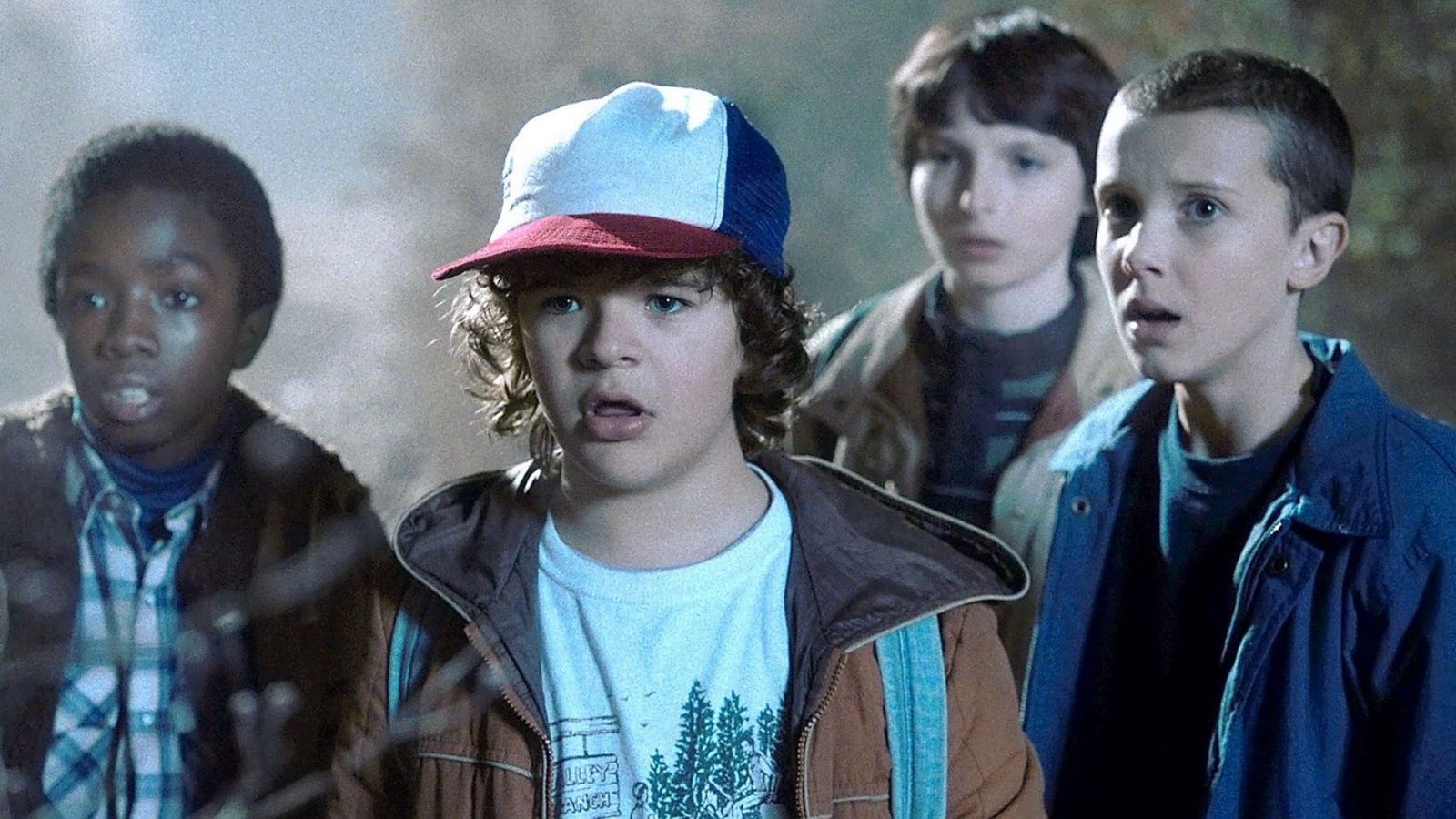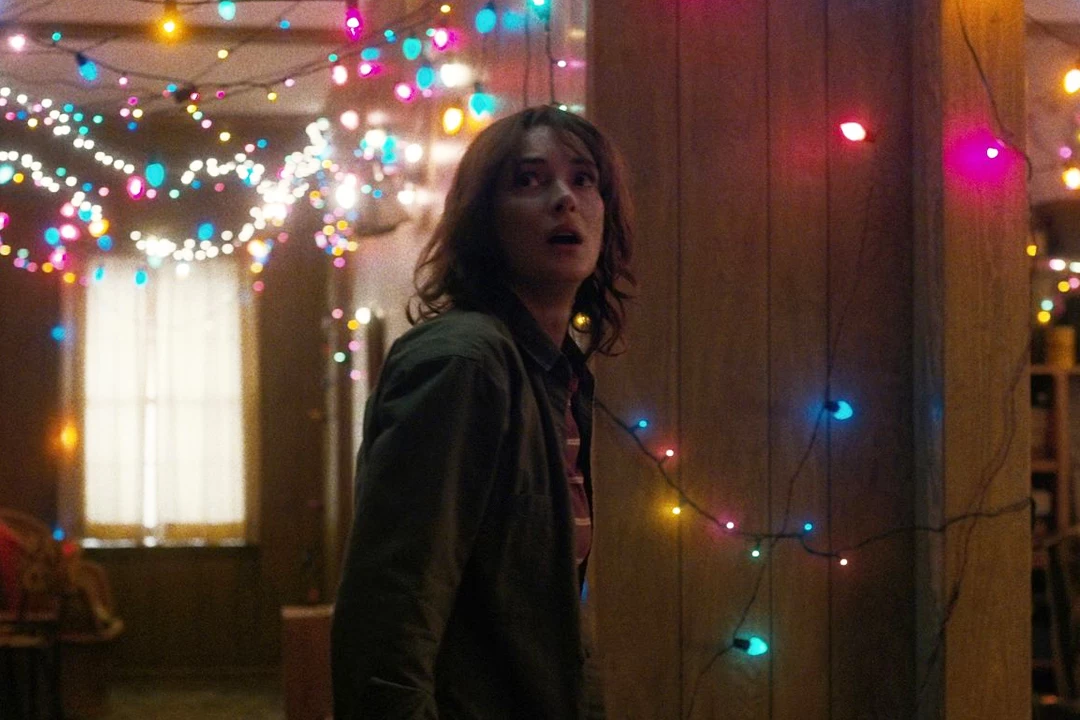
Get your popcorn and 3D glasses ready this week because we— wait where’s the movie?!
This week we are switching from the theater to the silver screen with the Netflix Original Stranger Things (2016) created by Matt and Ross Duffer! The show is an American science fiction show with supernatural and suspenseful elements. With the second season soon to arrive on October 27, 2017, I thought I would discuss the show’s outstanding soundtrack now to give you a few weeks to binge the show in preparation for the next season.
Released on July 15, 2016, Stranger Things quickly became the show of the summer. Though released exclusively for Netflix, the show gained massive popularity and a huge fanbase. Stranger Things features 12-year olds Mike (played by Finn Wolfhard), Dustin (played by Gaten Matarazzo), Lucas (played by Caleb McLaughlin), and Will (played by Noah Schnapp) as they grow up in a small town in Indiana, 1983. The show starts with the four boys playing Dungeons and Dragons at night in Mike’s basement. When Will loses the game, he sets off on his bike to head home, but on the way back he begins to feel as if he is being followed. After being chased to his empty house, Will is caught by the unknown creature that was pursuing him and Will disappears without leaving a trace. After his other three friends hear of his disappearance, they team up with a mysterious girl they find named Eleven (played by Millie Bobby Brown) in order to find their missing friend.

Since the show takes place in the 1980s, it is heavily influenced by the decade. The show constantly references and pays homage to famous 1980s movies, and everything from the games the boys play to the clothes they wear to the themes of the show all capture the essence of the 1980s. Notably, the soundtrack excellently pays homage to the 1980s through its use of 1980s songs as well as through a score composed with analog synths to recreate that iconic 80s synth sound. When combined, these two elements of the soundtrack create an eerie and suspenseful atmosphere.
The first element of the soundtrack is the selection of 1980s songs with a few exceptions. The center figure behind the soundtrack is Jonathan, the older brother of the missing Will. A bit of a shy outcast, Jonathan likes photography and listening primarily to the punk and post-punk genre of the time. This led to the inclusion of many mostly experimental, eerie, and rebellious songs. One of the more powerful moments of the show is the reoccurring use of the song “Should I Stay or Should I Go?” By The Clash. We first hear it in a flashback when Jonathan plays it for Will (Scene Link 1: Brothers, Together). Will uses it to remember Jonathan and to try to reconnect with him through it from the alternate dimension in which Will has become trapped, the Upside Down. Hearing this song suddenly blast out of a radio, breaking the silence, gives the song a much more menacing and creepy tone.

Another impactful song that plays in the series is “Elegia” by New Order. This song was named after the Greek word for elegy and was composed by the band for Ian Curtis, the lead singer of their former band Joy Division. Fittingly, this song plays during Will’s funeral after his disappearance. The town has given up hope of finding him as this solemn and otherworldly instrumental from the dark wave music subgenre plays (Scene Link 2: Funeral for Will). The characters, including Will’s mother Joyce (played by Winona Ryder), are grief-struck and distraught. This song captures their disconnect from the world and the hole that Will has left in them.
Aside from “Should I Stay or Should I Go” and “Elegia”, many of the other songs appear in the credits immediately after the show. These songs feature bands and singers such as Echo & the Bunnymen, The Bangles, Corey Hart, Foreigner, and Jefferson Airplane. “Nocturnal Me” by Echo & the Bunnymen is an especially good representation of the show through its dark and experimental rock sounds (Song Link 3: Episode 5 Credits Song).

The second element of the soundtrack is the amazing synth score by Kyle Dixon and Michael Stein of the experimental band S U R V I V E. The 36 songs all have unique electronic sounds that create moods of tranquility, fear, sadness, and more. The show’s opening credits best exemplify the genius behind Stranger Things‘s synth score. The inclusion and overlap of so many otherworldly electronic sounds, the glowing red letters of the logo, and the ethereal but eerie arpeggios all combine for one striking sequence (Scene Link 4: Opening Credits).
When listening to the soundtrack on Wednesday night by myself in the dark in preparation for this, a few songs especially stuck out of the 1:09:04 of music. The first one was “One Blink For Yes”, which was very calming (Song Link 5: One Blink For Yes). The song plays when Will’s mother Joyce begins receiving flashing Christmas light responses when she talks to them. She believes she is going crazy but she thinks that Will is behind it and tells him to answer with one blink for yes.

The second one I will mention is “Hallucinations”, which legitimately scares me now (Song Link 6: Hallucinations). After sitting alone in the dark and hearing this, it made me feel like I had been transported to the Upside Down, which is the name for the decaying dimension of the Demogorgon, the creature that took Will. I actually had to go turn on the lights because the sounds were so demented and scary!
If you couldn’t tell, I really like the Stranger Things soundtrack. Not only does it bring in emotional synth pieces, it also pulls songs from many of my favorite bands. I was very appreciative of the Duffer Brothers paying homage to some of the bands and genres of music I listen to, and I hope you can be too! Furthermore, I hope that I have convinced you to watch the show if you haven’t already. You still have a few weeks before season 2 comes out just in time for Halloween.
Thank you for reading this post! I know it wasn’t about movies this week, but be prepared for Baby Driver Part 2 next week. I hope to see you then on Scoring the Score!
Photo Credits:
Image 1: Figure 1
Image 2: Figure 2
Image 3: Figure 3
Image 4: Figure 4
Image 5: Figure 5
